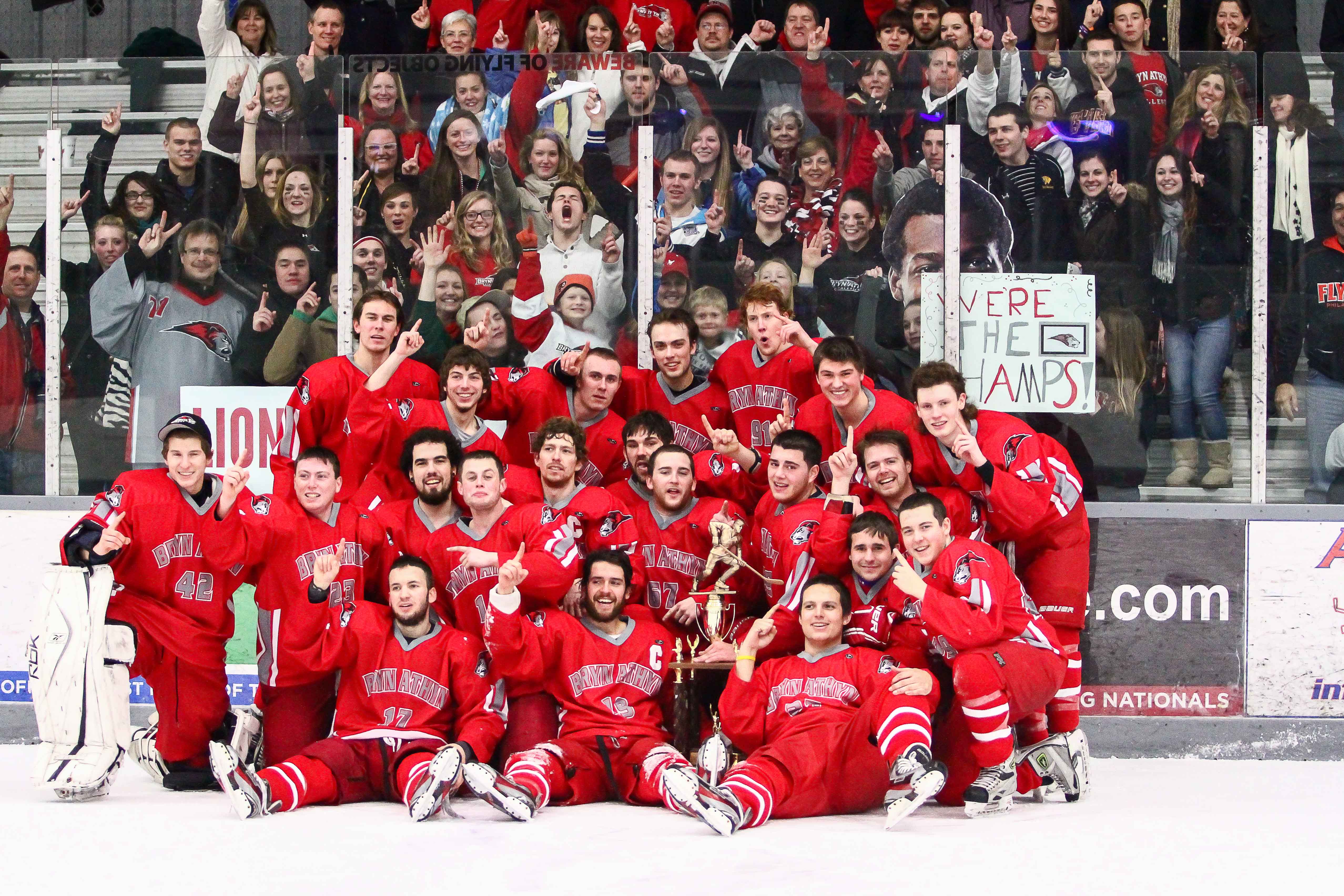April 19, 1968 marked a vital milestone in the history of Bryn Athyn College.[1] In his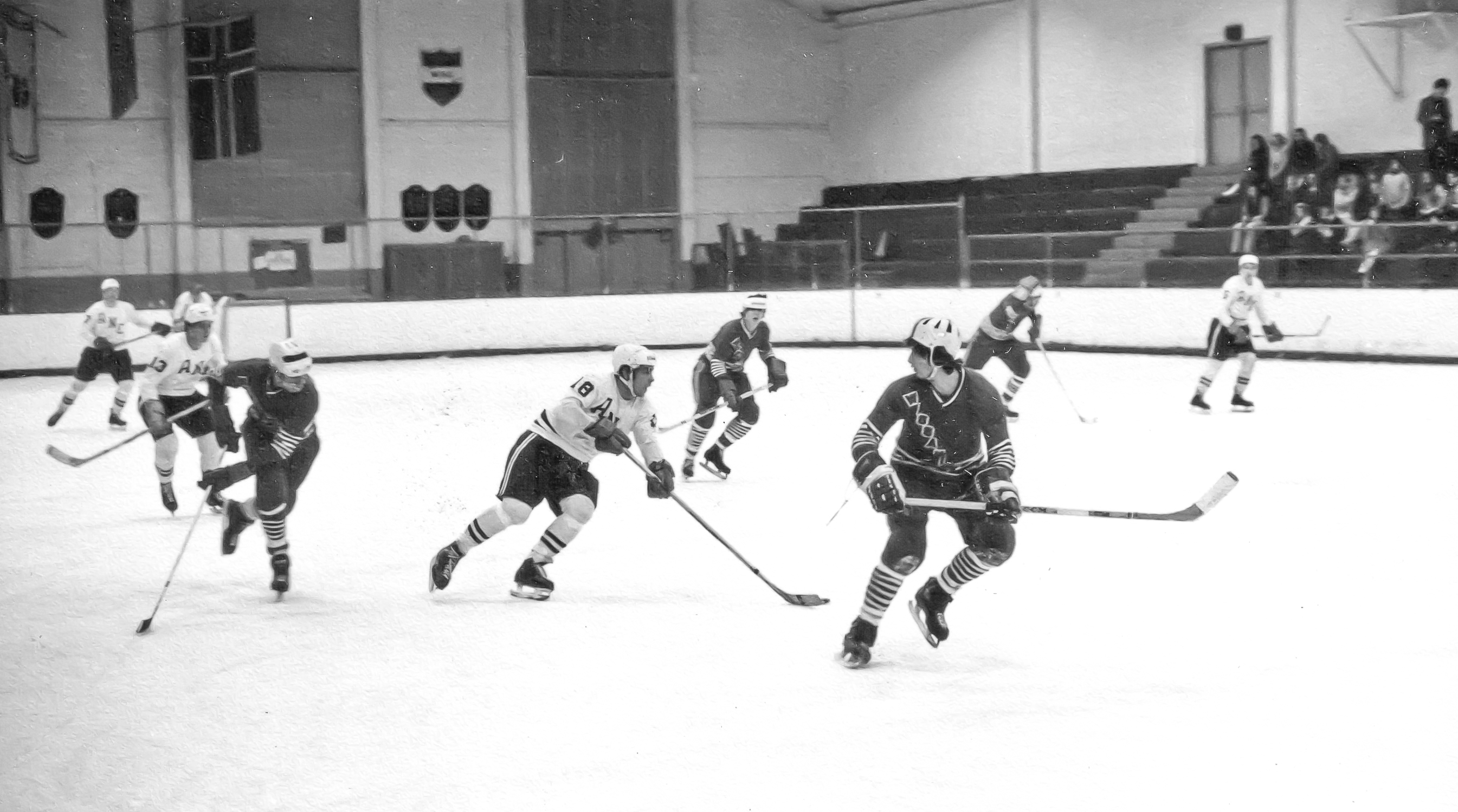 annual report for 1967-68, College Dean E. Bruce Glennremarked, “The biggest step
toward an independent College environment – the biggest perhaps in its history – was
taken on April 19, when students and core faculty moved from Benade Hall, across Papermill
Road [nowadays called Tomlinson Rd], and up the slope to Pendleton Hall, the new home
of the College and Theological School… student comment in the weeks since all academic
classes have been held there, as well as the relaxing moments in the handsome lounge
and central commons, indicate a new sense of awareness that this is a college in its own right.”[2]
annual report for 1967-68, College Dean E. Bruce Glennremarked, “The biggest step
toward an independent College environment – the biggest perhaps in its history – was
taken on April 19, when students and core faculty moved from Benade Hall, across Papermill
Road [nowadays called Tomlinson Rd], and up the slope to Pendleton Hall, the new home
of the College and Theological School… student comment in the weeks since all academic
classes have been held there, as well as the relaxing moments in the handsome lounge
and central commons, indicate a new sense of awareness that this is a college in its own right.”[2]
The college had previously shared the same buildings as the ANC Secondary Schools. Now it had its own campus. Since 1968, Bryn Athyn College has evolved from an institution where most students only attended for a year or two for a two-year degree to an institution where students study in the light of our mission for four years and graduate with a Baccalaureate degree from one of our excellent four-year majors. In a similar fashion, athletics has developed at the College, where each successive step has paved way for the current athletics program. We appreciate the efforts of our forebears who contributed to the successful program we all enjoy in the present day. It has been a long process which has always been committed to living our faith as we practice, compete and contribute to our community. We stand on the shoulders of giants!
Bryn Athyn College did not have its own athletics program until the late 1960s. College student athletes had participated on Academy teams that competed against other high schools and academies. For example, the 1920 Bryn Athyn Academy football team comprised students from the Boys’ School, College, and Theological School. The successful ice hockey team of 1921 had a roster that included 10 (ANCSS) Boys’ School and two College students.
Over time, it became clear that older College students competing on ANC Boys’ School teams was not fair to schools that were fielding high school only teams. In 1959-60, Academy athletic director, Stanley Ebert included in his annual report that College men would likely be excluded from the Academy teams in the near future, something he called “the end of an athletic era for the Academy.”[3] Wrestling success in the early 1960s and the Academy’s basketball championship in 1965, with a roster that included at least five college players, led other institutions to complain.[4] The 1966-67 year was the last for Bryn Athyn College men to participate on Academy sports teams.
Stanley Ebert noted in his 1959-60 report the necessity of developing athletic offerings for the College. It did not take long. Ronald Nelson, Ebert’s successor as the Academy athletic director, “in 1966 … planned the beginnings of a separate athletic program for the College…”[5] Although the athletic program at Bryn Athyn College wasn’t fully established until the late 1970s, Nelson’s work in the 1960s was an essential steppingstone for this important development.
Bryn Athyn College’s first purely college student athletic program was the 1966-67 men’s lacrosse team. The College Dean wrote in his annual report, “One of the most memorable accomplishments of the year was the fielding of a lacrosse team drawn exclusively from the College. Mr. Nelson gave this undertaking the most thoughtful care throughout the spring season and the members of the College Faculty, who have for several years urged and advocated a distinctly college athletic program, are especially gratified by the result”.[6] The first game was played on April 20, 1967. The team won four games and lost two during the inaugural season.[7] The following year, faculty member Brian Schnarr, encouraged by Nelson, founded the current ice hockey program. Dean of the College, E. Bruce Glenn, pointed out the importance of the addition of these sports offerings in his annual report:
“Varsity sports in the College, inaugurated with last spring’s lacrosse team, became more strongly ingrained in our life with full and successful seasons in ice hockey and lacrosse this year... Development of a varsity sports program brings inevitable problems of roster conflict; but its presence is important to the esprit of the College, so many years tagged to the sports activities of the secondary schools, and teachers have shown a willing understanding to make some allowances.“[8]
The first championship for an athletics team in Bryn Athyn College history was won by the men’s hockey team in 1972. Thereafter, the hockey team regularly made the playoffs and finished first in the conference’s regular season standings in 1976-77. But sports offerings at the College were limited; true, there was a rugby team in the early 1970s, but for almost 10 years, participation in intercollegiate athletics was only possible for college men and the two major sports they could choose from were lacrosse and hockey.
The 1977-78 academic year was an important milestone for Bryn Athyn College athletics.
Robert ‘Bob’ Heinrichs was named the first ever Bryn Athyn College athletic director.[9] This led to the development of other sports offerings, including men’s soccer whose
first game was a 2-0 win against Valley Forge University on October 8, 1977. The first
Bryn Athyn College end of year sports awards event was held that same year.[10] Athletics proved to be an important component of the overall Bryn Athyn College experience.
College Dean Robert W. Gladish pointed out in his annual report, “these activities
fill a very definite need in the life of many of the College students.”[11] 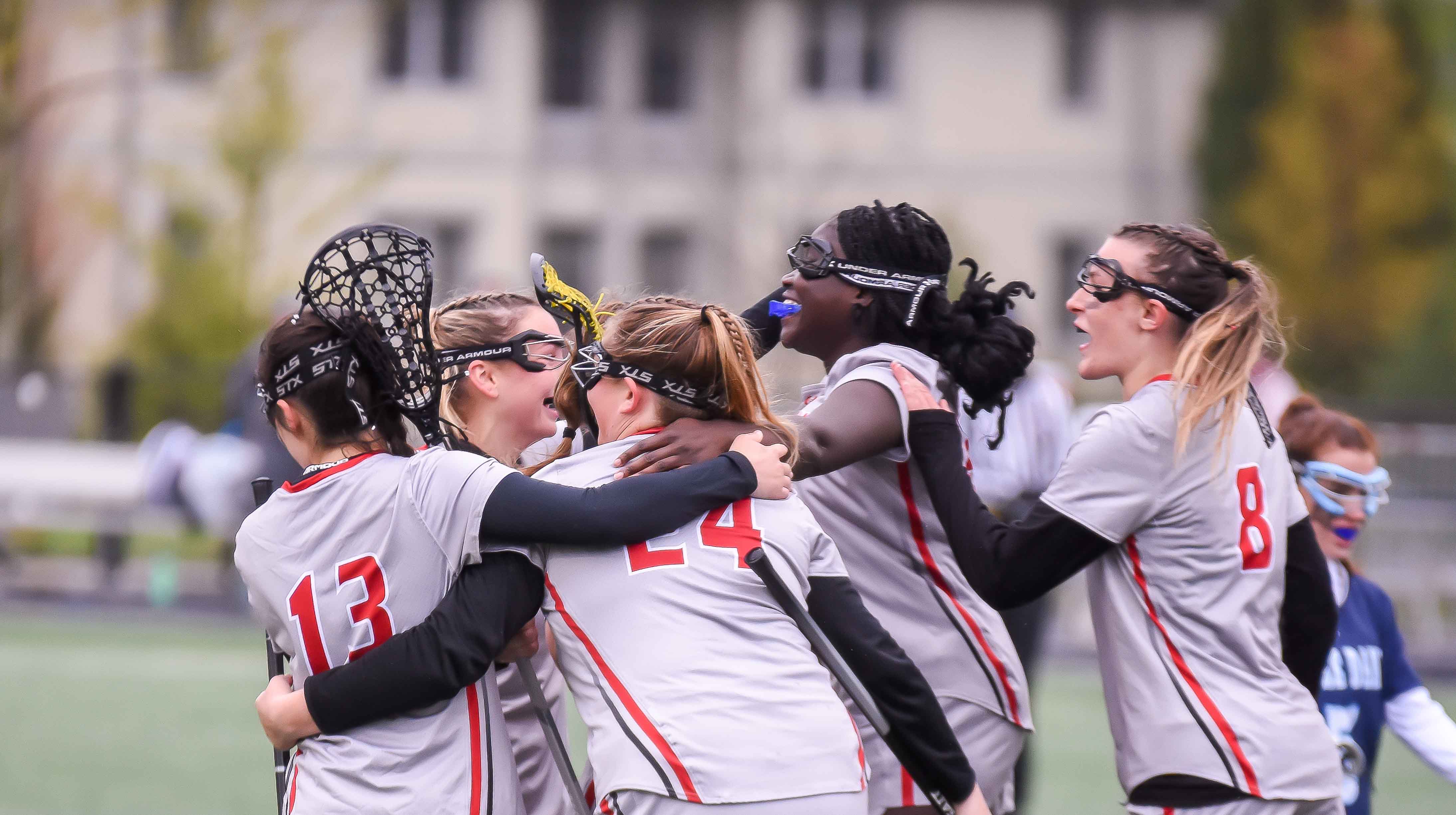
In 1977-78, the addition of informal women’s volleyball and lacrosse teams to the sportsofferings was a key development. For the first time, Bryn Athyn College women could play intercollegiate sports (the ANC Girls’ School introduced interscholastic sports a few years later). This important step forward owed much to the work of Bob Heinrichs and Mrs. Judith ‘Jid’ Smith.[12]
Developments in athletics in the 1977-78 season set the tone for the future. This arguably represents the beginning of the modern Bryn Athyn College athletics program.
In 1978-79, the College faculty voted to elevate the informal women’s volleyball and lacrosse initiatives to P.E. courses, which became part of the course offerings the following year. College Dean Robert W. Gladish noted, “The support for the women’s program has been enthusiastic, and I think it says something for our student involvement and faculty initiative that a college our size can do as much as it does in these areas.”[13] Enrollment on athletics teams earned PE course credit at Bryn Athyn College until 2011-12. Student athletes participated on the teams with or without enrolling in the courses. The 1979-80 college course catalog described the importance of P.E. and athletics in our college curriculum.
“One of the important principles of both a liberal arts education and a New Church education is the concept of man as ‘total man.’ To be a total man one must be spiritually fit, mentally fit, physically fit, and socially fit. These aspects of man are all inter-dependent. The physical education courses [at the College] are designed to further the development of each individual toward the goal of being a total person.”[14]
In 2004-05 the following was added to the ‘total person’ concept in the College course catalog:
“Our mission is to provide a broad and balanced program that enriches the lives of all students and helps them develop and maintain fitness of mind, soul, and body, thereby enabling a useful life in this world and the next.”[15]
In 1979-80, Bryn Athyn College’s athletics program included five major (varsity) sports: men’s soccer and women’s volleyball in the fall, men’s ice hockey in the winter, and men’s and women’s lacrosse in the spring. These sports would remain the main athletics offerings for the next 25-30 years. The 1989-90 College handbook listed the athletics offerings at the college: “Present varsity sports for men include soccer in the Fall, ice hockey in the Winter, and lacrosse in the Spring. Varsity sports for women include volleyball in the Fall and lacrosse in the Spring. We also provide a program in various club athletic activities, depending on student interest.”[16]
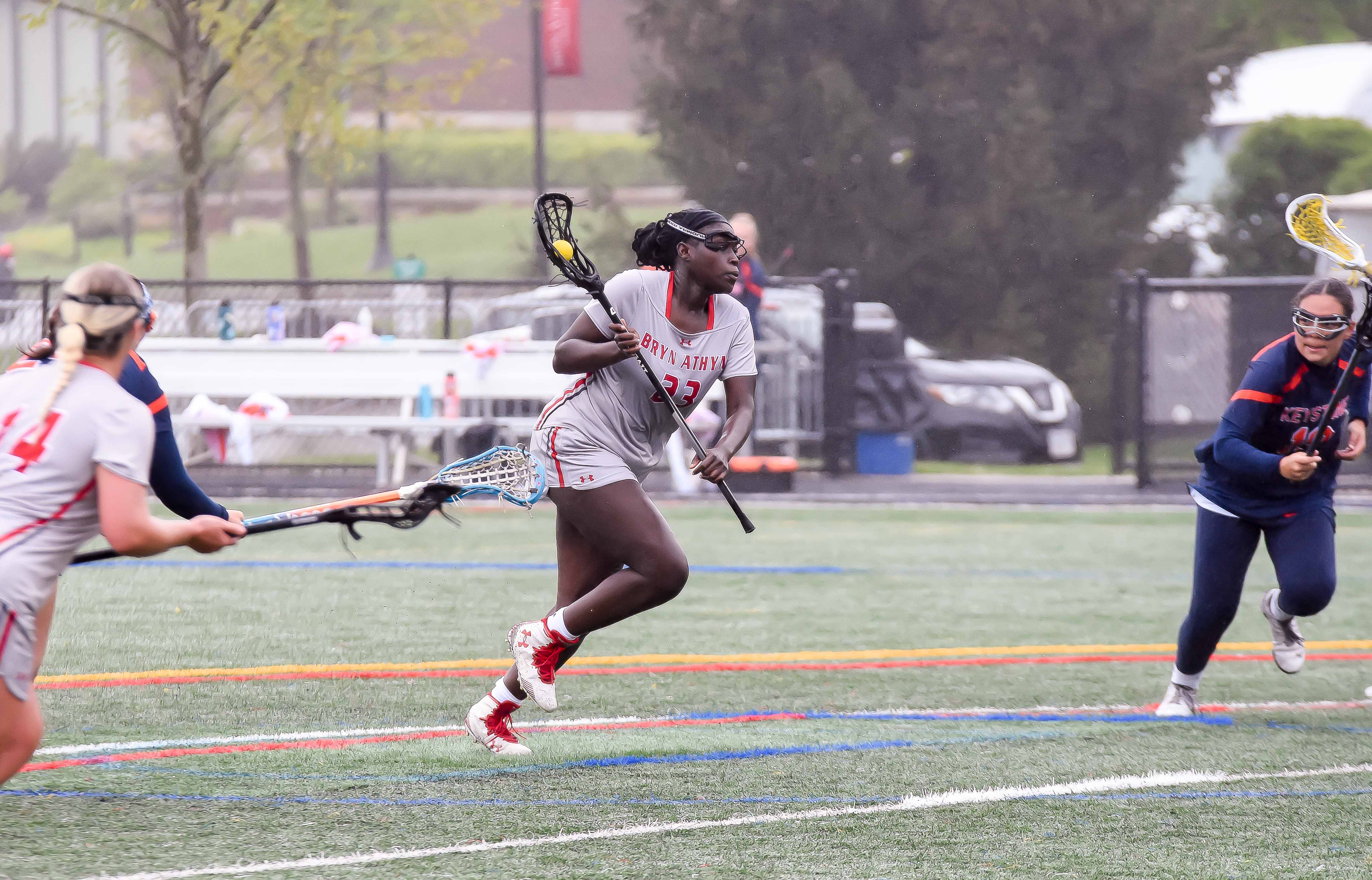 Another important development for Bryn Athyn College athletics, and the Bryn Athyn
community, was the construction of an ice rink on campus. The first rink was built
and opened in 1978-79, and a few years later an artificial cooling system was installed.
In 1995, a semi-enclosure was added to the rink which is now called the Jungé Pavilion.
The Pavilion is a mainstay for community life in Bryn Athyn winters, with hundreds
gathering to skate and to play hockey every week.
Another important development for Bryn Athyn College athletics, and the Bryn Athyn
community, was the construction of an ice rink on campus. The first rink was built
and opened in 1978-79, and a few years later an artificial cooling system was installed.
In 1995, a semi-enclosure was added to the rink which is now called the Jungé Pavilion.
The Pavilion is a mainstay for community life in Bryn Athyn winters, with hundreds
gathering to skate and to play hockey every week.
The athletics program did very well in the 1980s, which in some ways is remarkable since enrollment was much lower than today (fluctuating between around 125 to 140 full-time students per year) and that most students back then only attended the College for one or two years. Women’s tennis was briefly added to the formal offerings, an informal women’s cross country team existed in the early 1980s, an informal men’s basketball team operated for a few years, and there were also informal men’s softball and women’s ringette offerings. There was even a JV men’s ice hockey team for a couple of years. The varsity men’s ice hockey team won the regular season championships in 1987-88, but narrowly lost in the final of the playoffs, and the following year the women’s volleyball team finished in second place, the men’s soccer team had an excellent record of ten wins and four losses, and the men’s hockey team finished the regular season in second place.[17] Dean Robert W. Gladish stated, “we continue to attract a remarkable large proportion of our student body into these intercollegiate programs.”[18]
The 1990s saw the introduction of women’s badminton to the athletics offerings, a program that lasted for some 10 years. Bob Heinrichs retired after 15 years as the athletic director and was succeeded by Nina Cooper Dewees in 1992-93.[19] In 1996-97, the College was renamed Bryn Athyn College of the New Church.[20] It had previously been called The Academy of the New Church College. Then Dorothy Brisco became the new athletic director for Bryn Athyn College in 1999 and remained in this role for two years until Hilary Davies Bryntesson took over this role in 2001; she was succeeded in 2008 by Mr. Shawn Synnestvedt.[21] In 2002-03, co-ed badminton was introduced. During this time there were also informal offerings of men’s and women’s indoor soccer. The men’s hockey team won the 2005 invitational championship.
In the 1990s and the 2000s, Bryn Athyn College teams depended on the number and ability of students enrolled. When there were a small number of student athletes enrolled at the College, teams were occasionally organized as “club” teams. They included enrolled students, alumni, and sometimes community members. Though not ideal, competing as a club team enabled the enrolled student athletes to compete and kept the athletics program alive. The focus on the athletes’ spiritual growth through sports and their contributions to community life was an emphasis.
During the 1990s and 2000s, many of the teams Bryn Athyn College traditionally played (for example: Arcadia, Cairn, Cedar Crest, Eastern, Gwynedd Mercy, Neumann, PSU Abington, and Valley Forge University[22]) joined the NCAA. As Bryn Athyn College was not a member of the NCAA, it became increasingly difficult to find teams that were willing to play us. The college began to investigate NCAA membership as a means to grow the college by attracting students from the New Church who wanted to play sports in college, as well as those outside the church who would be interested in a spiritually based education.
In the mid-2000s, Dean Charles W. Lindsay wrote in his annual report for the 2006-07 academic year:
“Research confirms the important role played by athletics and other student life activities in attracting and retaining students. Students who enjoy playing sports in high school are interested in continuing to participate in college. Several studies show that the more involved or engaged students are with campus life, the more likely they are to remain in college and complete a degree… Several new sports programs, new job descriptions for coaches, and NCAA Division III status are all under consideration.”[23]
Matthew Kennedy became the new athletic director at the beginning of the 2010-11 academic year. His hiring was the result of an effort to put an increased emphasis on the college’s athletic program as a tool for recruitment and retention. Although Kennedy was the sixth athletic director in Bryn Athyn College’s history, he was first to work full-time in this role. His vision and enthusiasm together with increased resources and a much bigger athletic department, enabled him, Abraham Joseph, sports information director and assistant athletic director, and his team, to develop our athletics program in a remarkable fashion.
Sports teams at the College had for many years occasionally used the name “Flames” and in the mid-2000s, “Blaze” was briefly under consideration. The name “Lions” was adopted around 2006-07, and the first Lions logo was introduced in 2007. Then, on May 4, 2011, the athletics department, director of marketing Andy Sullivan, and the college revealed the new athletics logo, designed by Serena Sutton, the Lion, that is still used today.


The Lions logo that was used 2007-2011 (left) and the logo that was introduced in 2011 (right)
The athletics department introduced a new website in 2011 to replace the athletics webpages that had been in place since 2002-03 on the college’s main website. The department also began to use social media to promote athletics and update fans about games. New sports were added, and some old ones reintroduced (see table below). And various initiatives for student athlete health, involvement, and activities were initiated. Student athletes and coaches contributed many hours of service to developing and supporting youth programs in Bryn Athyn, the local schools, and serving the wider community.
The construction and completion of a new sports field for soccer and lacrosse between Pendleton Hall and the Jungé Pavilion was a huge step in 2013-14. Home games could now be played on the college campus. The field was converted to an artificial turf in 2016-17 and renamed General Ronald K. Nelson Field, after the beloved athletic director for the Academy who played a fundamental role in establishing Bryn Athyn College athletics.
|
Current Bryn Athyn College athletics offerings that existed prior to 2010-11 |
|
|
Sport |
Year |
|
Men’s ice hockey |
1967-present |
|
Men’s soccer |
1977-present |
|
Women’s volleyball |
1977-present |
|
Old Bryn Athyn College athletics offerings that have been reintroduced since 2011-12 |
|
|
Sport |
Year |
|
Men’s lacrosse |
2012-13 (had previously been offered 1966-2010) |
|
Women’s lacrosse |
2013-14 (had previously been offered 1977-2005) |
|
New Bryn Athyn College athletics offerings added since 2011-12 |
|
|
Sport |
Year |
|
Men’s tennis |
2011-12 (discontinued after 2018-19) |
|
Women’s tennis |
2011-12 |
|
Men’s basketball |
2013-14 |
|
Women’s basketball |
2013-14 |
|
Men’s cross country |
2013-14 |
|
Women’s cross country |
2013-14 |
|
Men’s golf |
2015-16 (discontinued after 2019-20) |
|
Women’s soccer |
2016-17 |
|
Women’s field hockey |
2017-18 (discontinued after 2023-24) |
|
Men’s volleyball |
2021-22 |
Men’s soccer and women’s volleyball started the 2010s successfully, winning the 2010 Eastern States Soccer League Championship and defeating three NCAA DIII teams, respectively.[25] The hockey program went from strength to strength: the team was crowned conference champions for the 2012-13 season. The hockey team attracted a significant amount of support from the college and Bryn Athyn communities. The team’s success played an important role in building community support and program strength. The returning championship team was escorted by the local Police and Fire Departments in a parade through Bryn Athyn.
Joining the NCAA DIII was a milestone for Bryn Athyn College history. The College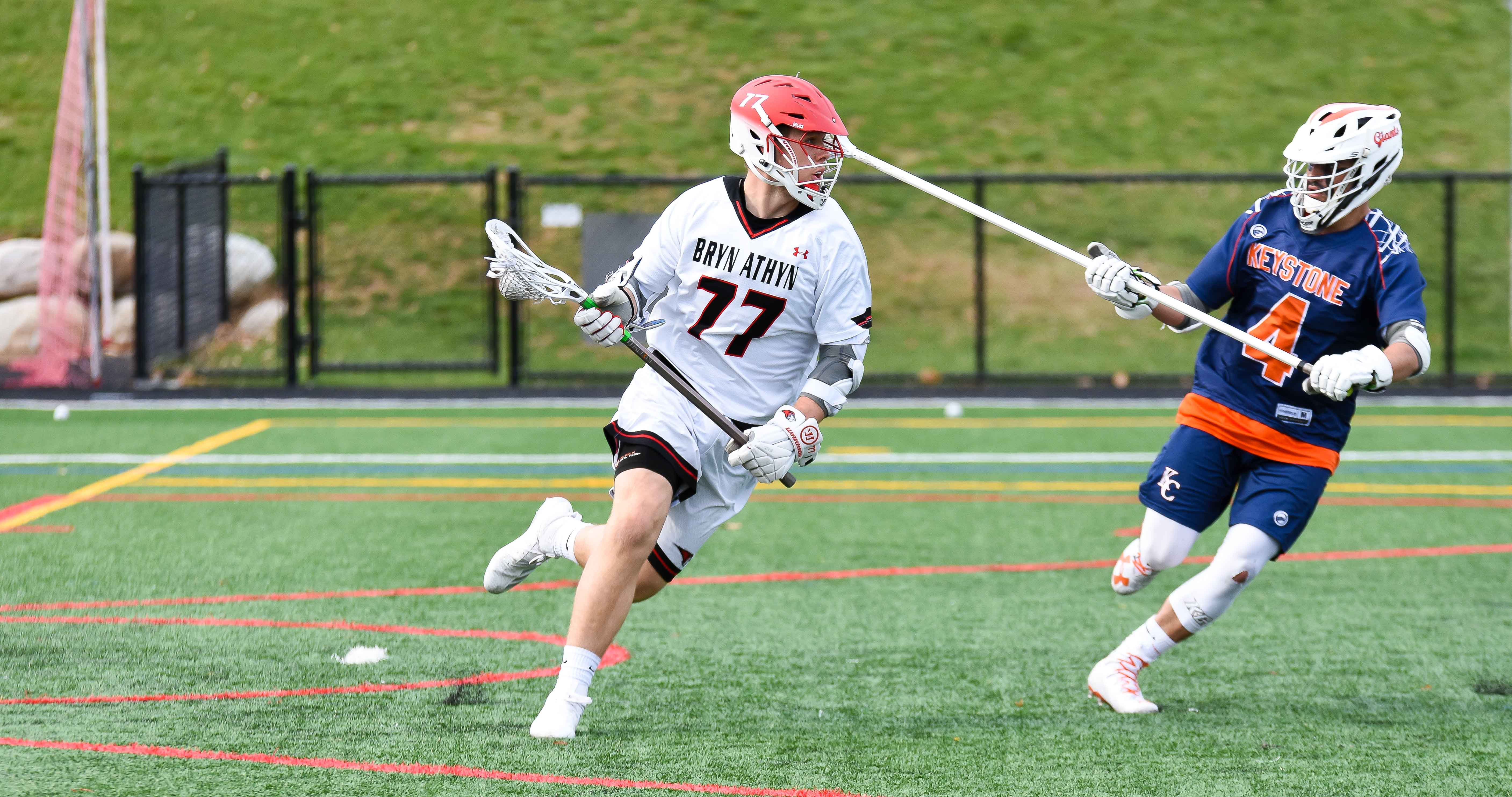
applied for membership in January 2013, began its exploratory NCAA DIII membership process in 2013-14, became provisional members in 2014-15, and full members of NCAA DIII on September 1, 2017.[26] The College played an independent NCAA DIII schedule in 2013-14 before joining the NCAA DIII conference NEAC (North Eastern Athletic Conference) in 2014-15. In 2018-19, the College switched to CSAC (Colonial States Athletic Conference) and then transitioned to the United East Conference in 2023-24.
Our teams have had many successes in the 10 years we have competed in NCAA DIII conferences. We have qualified for the post-season 57 times, won seven championships, and competed in four NCAA tournaments. Cross country runner, Rafe Williams, became the individual conference champion in 2021 and 2022. Women’s lacrosse won the conference championships in 2022 and 2023, and women’s soccer in 2021 and 2022. These four conference championships secured qualification for the NCAA DIII tournaments. In 2023, women’s soccer won the United East Skye Division championships and were the United East conference runner-up. Men’s lacrosse and tennis reached the conference championship games in 2018 and 2019, respectively. It has been an extraordinary decade.
Many student athletes have won NCAA DIII conference awards. Thirteen athletes have been conference player or runner of the year, and five athletes were awarded conference rookie of the year. Five of our coaches have received the conference coach of the year award, one of them twice. Impressively, Bryn Athyn College student athletes have been selected to All-Conference teams more than 200 times in the ten years we have been part of NCAA DIII conferences. Student athletes have also done well academically. For example, more than sixty percent of our pre-nursing or biology major students who went on to attend graduate or nursing school were athletes.
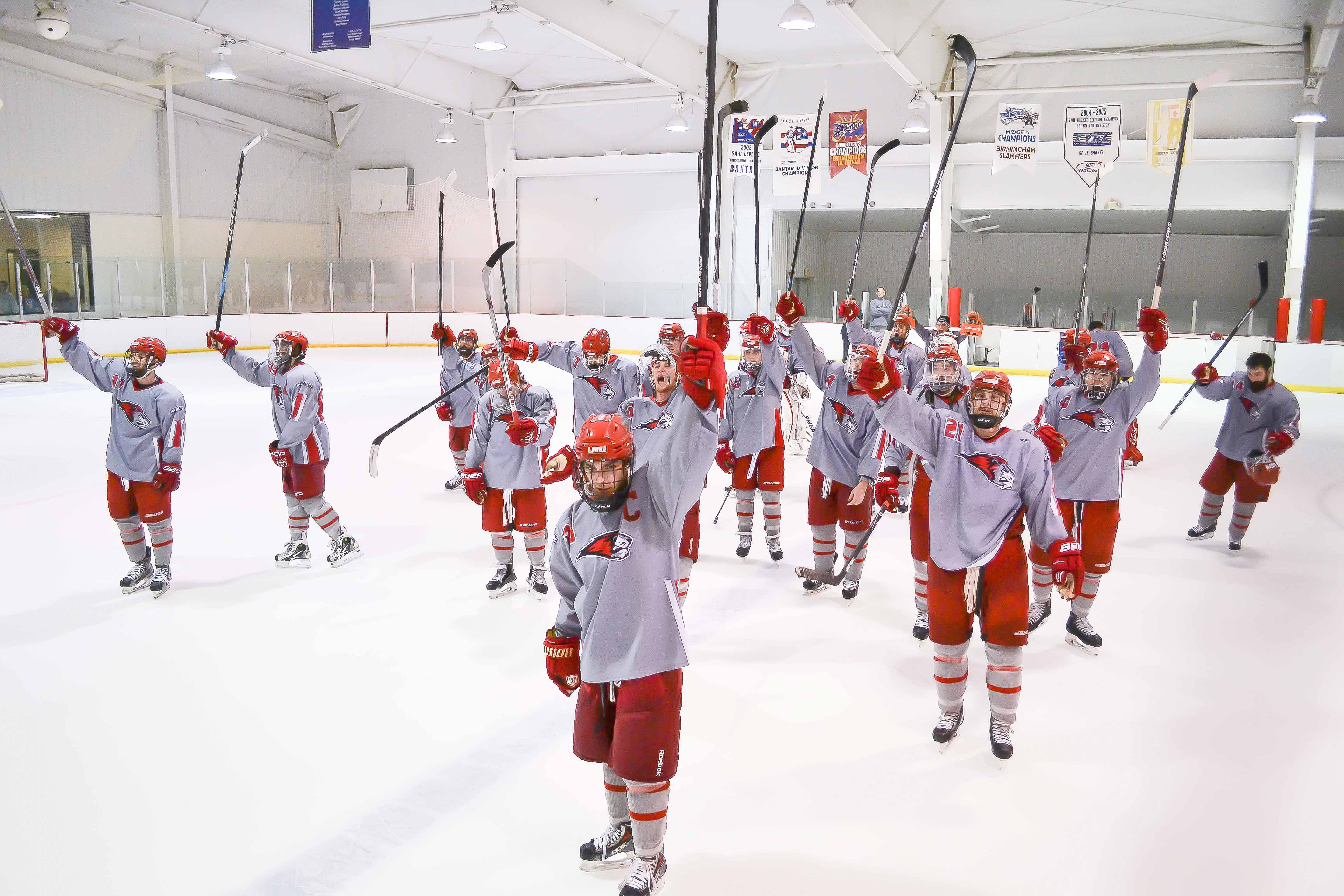 Men’s ice hockey was the only Bryn Athyn College athletic department sponsored team
that did not join NCAA DIII in 2013-14. Instead, the team competed in ACHA D3, won
three consecutive conference championships between 2015-17, became ranked #1 in the
Atlantic Region of ACHA D3 each season, and competed in three ACHA D3 National Championships
in Pelham, AL (2015), Grand Rapids, MI (2016) and Columbus, OH (2017). Twice, in 2015
and 2017, the Lions reached the semifinals at the National Championships. College
student fans and community members traveled to the Championships. On campus, the college
hosted watch parties for students and faculty. The National Championships were a wonderful
community-wide celebration.
Men’s ice hockey was the only Bryn Athyn College athletic department sponsored team
that did not join NCAA DIII in 2013-14. Instead, the team competed in ACHA D3, won
three consecutive conference championships between 2015-17, became ranked #1 in the
Atlantic Region of ACHA D3 each season, and competed in three ACHA D3 National Championships
in Pelham, AL (2015), Grand Rapids, MI (2016) and Columbus, OH (2017). Twice, in 2015
and 2017, the Lions reached the semifinals at the National Championships. College
student fans and community members traveled to the Championships. On campus, the college
hosted watch parties for students and faculty. The National Championships were a wonderful
community-wide celebration.
Men’s ice hockey joined NCAA DIII in 2017 and played independent schedules for three seasons. The hockey team joined ACHA D2 in 2021 and qualified for the playoffs in 2021-22. The hockey program continues to support the Academy and Bryn Athyn youth hockey programs though coaching and skill clinics.
Aside from success in games and competitions, our athletic department and teams have hosted countless successful events over the years. For example, in the 1980s and for about thirty years onward, the men’s soccer and lacrosse and women’s lacrosse and volleyball season schedules frequently included games against alumni. In recent years, some teams have modified this tradition and hosted alumni vs. alumni games. The introduction of Athletics Commissioning Services at the Bryn Athyn Cathedral (first in 2015) have been a meaningful way to bring spiritual focus for the teams. A community-wide celebration for the retirement of Bob Eidse’s #18 hockey jersey in December 2015, and the 50th anniversary celebrations of the men’s lacrosse and men’s ice hockey programs in 2016 again brought the community together to celebrate our athletic tradition. In addition, individual teams continue to frequently host a range of events such as fund raisers, charity events, or organize various theme-based evenings in connection to their games.
Bryn Athyn College athletics is embarking on a new exciting year in 2024-25 under the leadership of Salvatore Capone, the tenth athletic director in the history of Bryn Athyn College. Just like Bryn Athyn College, the athletics program has developed significantly since the first college teams were fielded in the late 1960s, but the core remains the same: to fulfill our mission, provide our students with meaningful activities outside the classroom that enrich their lives, promote the college, and to engender a sense of belonging, pride and loyalty. Tradition and history play an important role for academic institutions and the athletic programs are key for cultivating these elements. Future students will be attracted to the sense of tradition and success, and the chance to be a part of a college that contributes to the wider community. Our wonderful mission underpins academic, student life, and our athletics programs with its rich history and service-oriented ethos.
With much gratitude for the contributions of our athletes, coaches and athletic directors who began and developed our extraordinary athletics’ tradition,
Fredrik Bryntesson
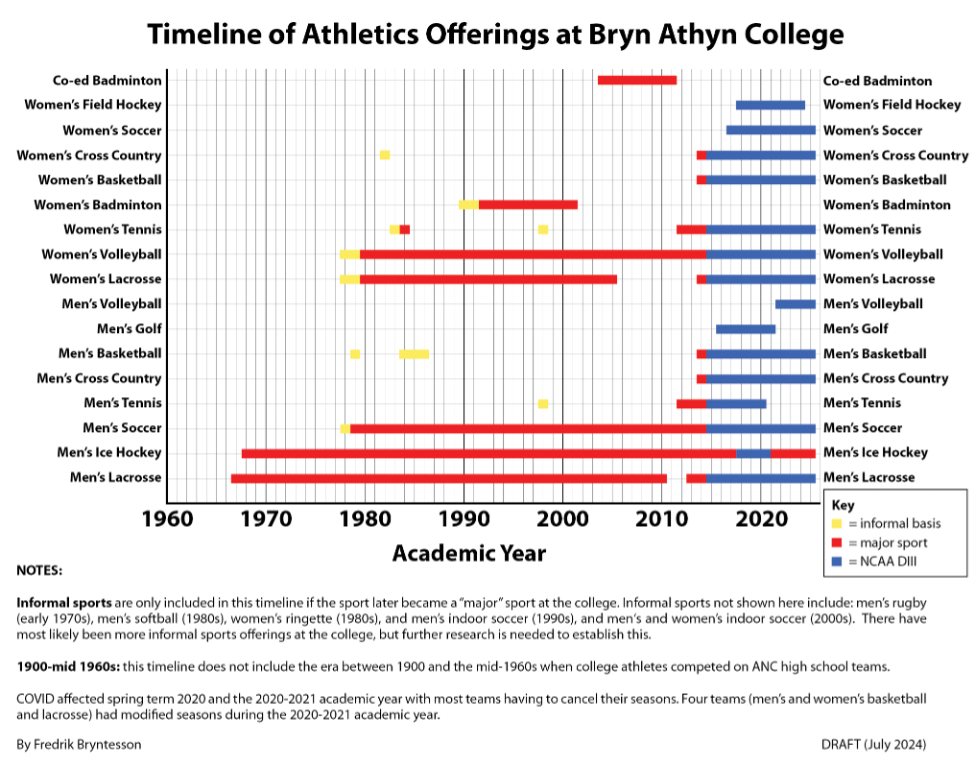
[1] Bryn Athyn College of the New Church, or Bryn Athyn College as it is usually referred to, was called the Academy of the New Church College until 1996-97. To avoid confusion, Bryn Athyn College is used throughout this document.
[2] E. Bruce Glenn, “Report of the Dean of the College,” in The Academy of the New Church, The Academy Journal, Annual Number 1967-1968 8, no. 1 (August 1968): 14. The College Dean was the highest ranking administrator at Bryn Athyn College until the first College President was
[3] Richard R. Gladish, A History of The Academy of the New Church (from its beginnings to 1966) III, (Bryn Athyn, 1967), 195.
[4] Richard R. Gladish, A History of The Academy of the New Church (from its beginnings to 1966) III, (Bryn Athyn, 1967), 195.
[5] Richard R. Gladish, A History of The Academy of the New Church (from its beginnings to 1966) III, (Bryn Athyn, 1967), 195.
[6] Eldric S. Klein, “Report of the Dean of the College,” The Academy Journal, Annual Number 1966-1967, 7, no. 1 (August 1967): 11.
[7] Michael D. Glenn, “Lacrosse,” The Commoner, (May-June 1967): 7-8.
[8] E. Bruce Glenn, “Report of the Dean of the College,” The Academy Journal, Annual Number 1967-1968 8, no. 1 (August 1968): 14.
[9] E. Bruce Glenn, “Report of the Dean of the College,” The Academy Journal, Annual Number 1976-1977 17, no. 1 (August 1977): 11.
[10] Rose, Tim. ANC Soccer Club. The Commoner, Issue 1, October 27, 1977. p. 8. Men’s soccer was an informal sport to start with until it became a major sport a couple of years later; Robert W. Gladish, “Report of the Dean of the College,” The Academy Journal, Annual Number 1977-1978 18, no. 1 (August 1978): 10-11.
[11] Robert W. Gladish, “Report of the Dean of the College,” In The Academy of the New Church, The Academy Journal, Annual Number 1977-1978 18, no. 1 (August 1978): 10-11.
[12] Robert W. Gladish, “Report of the Dean of the College,” The Academy Journal, Annual Number 1977-1978 18, no. 1 (August 1978): 10-11.
[13] Robert W. Gladish, “Report of the Dean of the College,” In The Academy of the New Church, The Academy Journal, Annual Number 1978-1979 19, no. 1 (August 1979): 13-14.
[14] “Physical Education,” in Theological School and College Catalog 1979-80, p. 49.
[15] “Physical Education,” in Bryn Athyn College of the New Church 2004-05 Catalog, p. 81.
[16] The Academy of the New Church College, College Handbook 1989-90, p. 19.
[17] Robert W. Gladish, “Report of the Dean of the College,” The Academy Journal, Annual Number 1987-1988 29, no. 1 (1987): 18; Robert W. Gladish, “Report of the Dean of the College,” The Academy Journal 1988-1989 30, no. 1 (1989): 21.
[18] Robert W. Gladish, “Report of the Dean of the College,” In The Academy of the New Church, The Academy Journal 1988-1989 30, no. 1 (1989): 21.
[19] The current names for these universities and colleges have been used here.
[20] Brian L. Schnarr, “Report of the Dean of the College,” The Academy Journal 1991-1992 33, no. 1 (1992): 29; Brian L. Schnarr, “Report of the Dean of the College,” The Academy Journal 1992-1993 34, no. 1 (1993): 33.
[21] Charles W. Lindsay, “Report of the Dean of the College,” The Academy Journal 1996-1997 38 (1997): 34. The college was previously known as The Academy of the New Church College.
[22] Charles W. Lindsay, “Report of the Dean of the College,” In The Academy of the New Church, The Academy Journal 1998-1999 40 (1999): 24; Charles W. Lindsay, “Report of the Dean of the College,” In The Academy of the New Church, The Academy Journal 2000-2001 42 (2001): 13.
[23] Charles W. Lindsay, “Report of the Dean of the College,” The Academy Journal 2006-2007 48 (2007): 13.
[24] The current names for these universities and colleges have been used here.
[25] “Sports Success,” The Lion’s Pride 3, Issue 12 (December 2010).
[26] Kiri Rogers, email message to Bryn Athyn College faculty and staff, March 26, 2013; Louise McCleary, email message to President Kristin King, April 25, 2014; “Bryn Athyn College Division III provisional membership,” Bryn Athyn Post, May 1, 2014; Jay Jones, email message to President Brian Blair, on June 30, 2017.
